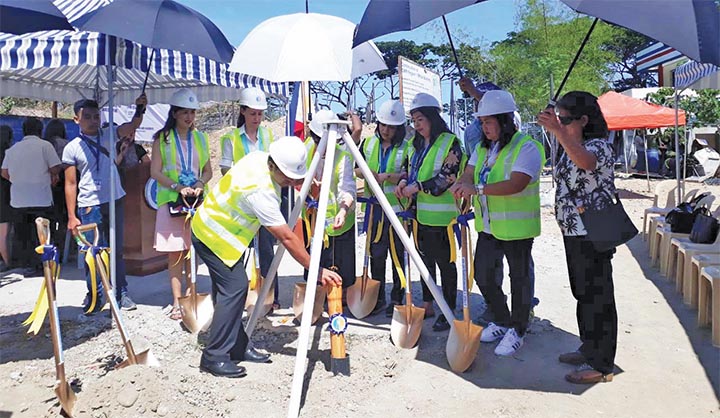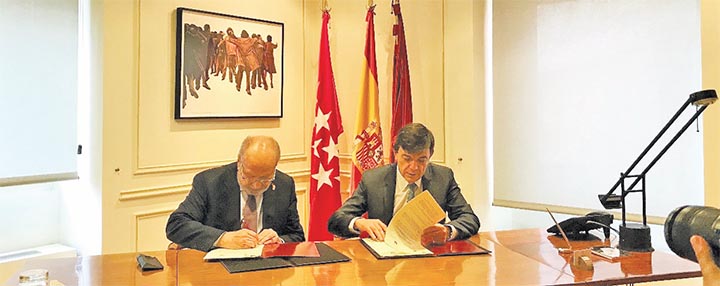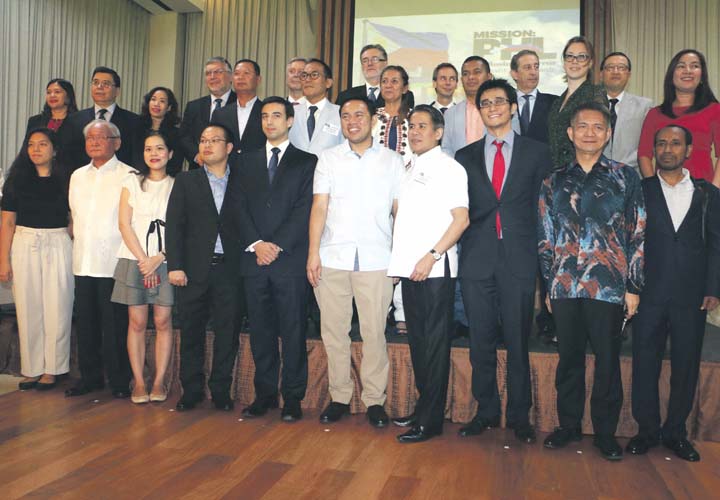DEVELOPED in 2014 by the United States Agency for International Development (Usaid), the Program for Young Parents (PYP): Giving Second Chances to Teen Moms, was one of the projects nominated for Project of the Year at the recent Mission: PHL, the BusinessMirror Envoys&Expats Awards.
As stated in the Usaid’s project brief, PYP uses a holistic approach that provides maternal and child health, as well as family-planning services to pregnant teenagers and teenage mothers while linking them to programs that provide continued education and offer livelihood opportunities.

Usaid developed the PYP as one component of a larger Visayas health project implemented in partnership with the Department of Health (DOH) and Engender Health. Usaid’s Visayas health project works to improve the health of families in the Visayas region through strategic interventions in maternal, neonatal and child health, nutrition and family planning.
Bryn Sakagawa, Deputy Chief of the Usaid Office of Health, said that the PYP builds upon the work on reproductive health done over many decades by Usaid.
“What this project is really trying to do is work with young people; to help young mothers and their partners, to improve the health of their newborns and to give them an opportunity for their future,” Sakagawa said.
Teenage pregnancies

ACCORDING to a 2017 report of the United Nations Fund for Population Activities (now the United Nations Population Fund), the Philippines has the third-highest adolescent birth rate among 11 Southeast Asian nations, trailing Lao PDR and Thailand.
The National Demographic and Health Survey of the Philippine Statistics Authority (NDHS-PSA) lists half a million Filipino adolescents aged 15 to 19 to have begun childbearing in 2017 alone.
Experts say that early childbearing exposes young mothers and their children to multiple health risks, since the bodies of young mothers are not fully ready for pregnancy and childbirth.
About 10 percent of teenage pregnancies end in miscarriage or stillbirth, while 2.5 percent of these pregnancies result in neonatal deaths.
Early pregnancy and childbirth also pose social and economic risks, such as reduced probability of school completion, and therefore, reduced likelihood of gainful employment.
The UNFPA estimates that early childbearing costs the Philippines some P33 billion annually.
Sakagawa bared that there are some 19 provinces and 13 cities in the country with the highest unmet needs for family planning and the highest incidence of teen pregnancies.
To address these needs, the PYP has begun implementation in 26 hospitals in the provinces of Iloilo and Negros Occidental in Western Visayas; Bohol and Cebu in Central Visayas; and Northern Leyte, Southern Leyte and Samar in Eastern Visayas.
Usaid helped establish PYP centers in the health facilities where births to women below 19 years old constitute 15 percent of the total, compared to 10 percent to 11 percent at the national level.
How PYP works
THE PYP basically adopted the Teen Moms Program started by the University of the Philippines-Philippine General Hospital (UP-PGH). It expanded the teenage pregnant mother’s access to quality, integrated maternal and child health, including family-planning services.
Usaid launched the PYP in partnership with select government agencies. Sakagawa said: “With the Program for Young Parents, the first lesson is relationship-building and making sure that we have good trust with key stakeholders, not just with the hospitals, but also with many government agencies because we would not be able to achieve the results that we have unless it’s linked to social services, educational opportunities and also to local governments. So relationships are key.”
Since 2014 the Usaid has partnered with the Department of Health (DOH) to establish 26 PYP Centers throughout the Visayas region that have served over 17,000 young clients.
The DOH mandates that women, aged 19 years and younger should deliver in a hospital capable of providing Comprehensive Emergency Obstetric and Newborn Care (CemONC).
This DOH policy classifies teenage pregnancies as “high risk” and placing teenage mothers in CEmONC hospitals will safeguard their health as well as their infants, thereby reducing maternal and infant mortality.
Through the PYP, health service providers in CEmONC-capable facilities are equipped with the knowledge and skills for dealing with adolescent clients.
Under the PYP, the Usaid engages public hospitals—at the regional, provincial and district levels—that have a high number of deliveries from economically challenged teenage mothers (women below age 19).
The PYP supports these teenage moms in completing antenatal consultations, facility-based delivery, exclusive breastfeeding for at least six months and spacing of the next pregnancy for three to five years through voluntary family planning.
In operationalizing the PYP, participating hospitals set up a PYP Team with members from the different departments of the hospital.
The PYP Team then undergoes training to provide adolescent-friendly information and services.
The Team identifies and transforms an area in the hospital into an adolescent-friendly space called the PYP Center. It is the team that prepares the PYP protocol and operates the PYP Center.
Results
FOUR model PYP Centers have been developed to serve as demonstration sites to show interested public hospitals how to establish and operate similar programs in their own facilities.
In 2016 an assessment conducted by the UPecon Foundation and Usaid, through the Health Policy Development Program, concluded that the PYP meets the Adolescent-Friendly Health Services standards of the DOH. “The PYP provides a clear link between demand generation strategies and service delivery. It supports teenage mothers before, during and after delivery at different levels of the health system.”
Sakagawa said that the PYP is a recipient of the 2017 Good Practice Award of the National Economic Development Authority.
“This is probably one of the most successful reproductive-health programs. Just to be clear, our programs do not focus on population control. Our focus is really saving lives of mothers and babies. Everything that we do, our entire health program is aligned with the government of Philippines’s objectives. So when you ask what our targets are, our targets are to reach the goals of family planning of the Department of Health. We are really aligned and support the targets of Family Planning 2020, of which many countries are signatories.”
Image credits: Sari Osorio

































